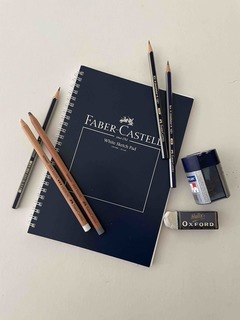What is special about Pencils? Dry Media in art.
An Exploration of Dry Media: Unveiling the Secrets of Pencils and Beyond
Recently, I had the privilege of attending a captivating Dry Media presentation at Gordon Harris, our beloved local art supply store. The event drew in a diverse crowd of enthusiastic artists, all eager to delve deeper into the world of our most fundamental artistic tool—the humble pencil. Little did I know that countless fascinating aspects of pencils and dry media were waiting to be unveiled.
As any artist can attest, the ability to sketch and draw is a cornerstone of creating art. While most of us are acquainted with the basic principles of lead pencils, such as the varying grades like 2B, 4B, 6B, and 9B, the knowledge continues beyond there.
During the presentation, we were taken on a journey exploring the origins of lead in pencils. Admittedly, a few chuckles reverberated through the room at the mention of "lead" pencils, but the reality of how lead finds its way into these art tools proved genuinely captivating.
Powdered Charcoal
I had never ventured into the realm of powdered charcoal or graphite powder. The very thought of picking up a jar of these mysterious substances left me perplexed about their applications. However, our knowledgeable presenter effortlessly demonstrated how quick and easy it is to use powdered charcoal or graphite powder to create vibrant areas of colour. Contrary to popular belief, these powders aren't limited to simple black shades.
They can be applied with a brush or rubbed with your hand or a cloth.
Moreover, they can be easily erased, allowing for intricate modifications and fascinating techniques. One particularly intriguing application of these powders is their use in transferring drawings onto other surfaces.
For example, imagine wanting to sketch something onto your canvas—you simply apply the powder to the back of the image, press it onto the canvas, and voila! You can then draw on the front, replicating your design with precision.
Pencils, it turns out, come in an extensive range of grades, spanning from the hardest 9H to the softest 9B. In addition to the traditional lead pencils, there are also carrier-type pencils, such as "Propelling pencils," which hold replaceable leads in small sizes for fine detail work, and "Clutch pencils," which accommodate thicker leads for bolder strokes and shading.
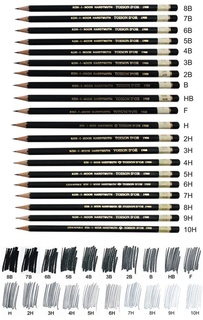
Silverpoint
Now, let's venture into the realm of Silverpoint. This artistic medium, though relatively unknown to many, captivated my attention. Silverpoint involves a small point of real silver housed within a carrier pencil—a device designed to cradle and facilitate its use.
Artists have employed silverpoint for centuries, predating the discovery of graphite. The beauty of Silverpoint lies in its ability to create lines on canvas without smudging or interfering with subsequent layers of paint. It's particularly valuable for initial sketching, providing a foundation that seamlessly blends into the artwork.
Personally, I often opt for watercolour pencils, as they seamlessly integrate with my acrylic paintings. The watercolour pencil allows me to draw with precision, and once the desired lines are in place, a touch of water brings them to life through blending and washing techniques. This versatile medium has become an indispensable part of my artistic toolkit.
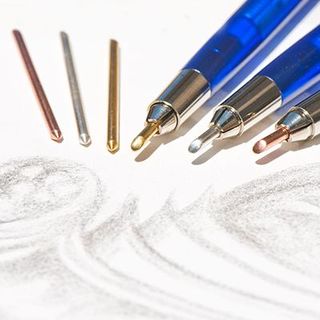
Colored Pencils
Let's not forget the vibrant world of coloured pencils as an art form. Countless types and variations of coloured pencils exist, and the quality and beauty of those purchased from art stores are unrivalled. However, these pencils provide an ideal starting point for budding artists and children still learning the ropes.
In my opinion, watercolour pencils reign supreme. When engaged in watercolour artwork, they offer greater control over intricate details. Once the desired image is sketched using the watercolour pencil, a touch of water brings it to life. The transformation is astonishing!
The ability to start with a dry medium and conclude with a blend of colours and washes opens up a world of possibilities. As I mentioned earlier, watercolour pencils also prove invaluable for outlining on canvases prepared for acrylic work, making them an incredibly versatile tool in an artist's arsenal.
Stumps and Tortillions
We explored various blending techniques and tools during the presentation, including Stumps and Tortillions. These compressed paper sticks provide a means to blend charcoal or graphite without relying on oily or sweaty fingers that could mar the finished sketch.
Additionally, a chamois was introduced—an innovative tool for blending large areas seamlessly. The best part? Unlike blending stumps and trillions, the chamois can be easily washed when soiled, ensuring a clean and practical blending experience.
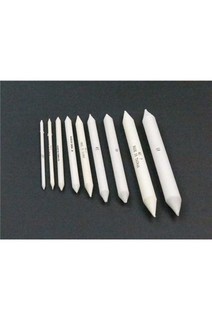
Erasers
When it comes to erasing, a kneaded putty eraser emerges as a practical and versatile option. With this eraser, you can mould it to create fine points for precise erasure or flatten it to remove more extensive areas.
The flexibility it offers is unparalleled, making it an indispensable tool for any artist. Speaking from personal experience, I recommend incorporating a kneaded putty eraser into your toolkit.
When it comes to erasers, opting for natural rubber is a wise choice. Unlike their synthetic or vinyl counterparts, natural rubber erasers minimise slippage and smearing, facilitating cleaner and easier removal of charcoal or graphite.
Click on the image below to see a tutorial for using kneadable erasers
Erasing Shields
Moreover, I discovered an intriguing tool known as the erasing shield. Although unfamiliar to me before the presentation, its purpose became immediately apparent. This slender piece of metal is designed to lift out specific areas without disturbing the rest of the sketch.
With different shapes available, you can create intricate designs by selectively leaving areas untouched. The versatility of the erasing shield is remarkable, offering artists precise control over their erasure process.
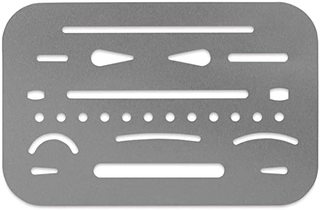
After attending this captivating presentation, I left feeling inspired and eager to retrieve my drawing kit from its dormant state. Having accompanied me for over three decades, some of my pencils yearned for a renaissance in the realm of art.
Now armed with newfound knowledge, I intend to visit the art shop once again, replenishing my artistic arsenal with any missing bits and pieces.
In Summary
The world of dry media is a treasure trove of possibilities. Pencils, powdered charcoal, graphite powder, silverpoint, watercolour pencils, blending tools, and erasers—all contribute to the artist's palette of creative expression.
So, embrace the humble pencil and its companions, explore their potential, and let your imagination run wild on the canvas of possibility. With each stroke, you'll unlock a world of artistry waiting to be discovered.
If you found this article interesting why not check out my other ones on things like What Type of Paint is Best or Being Eco-friendly in Your Art Practice
